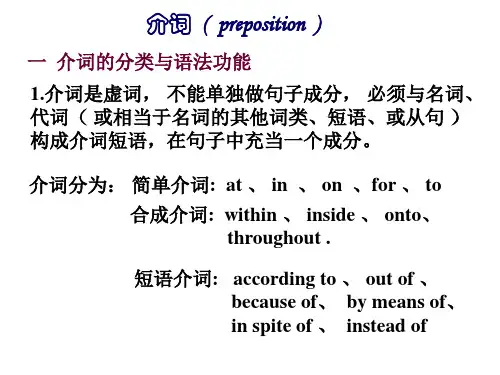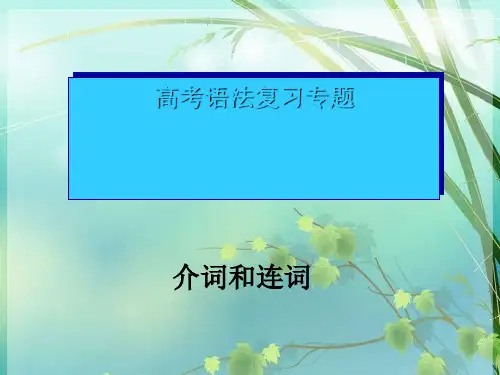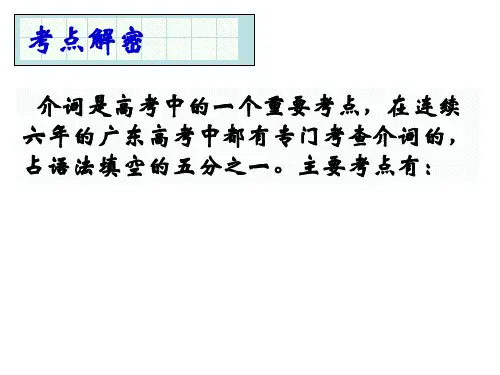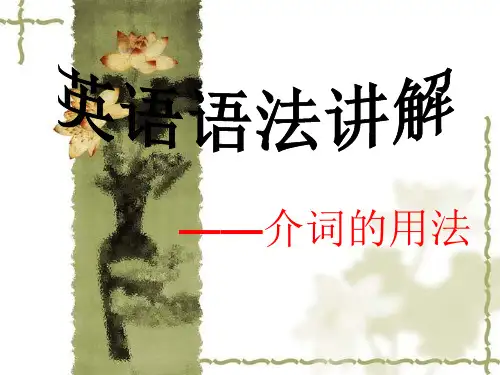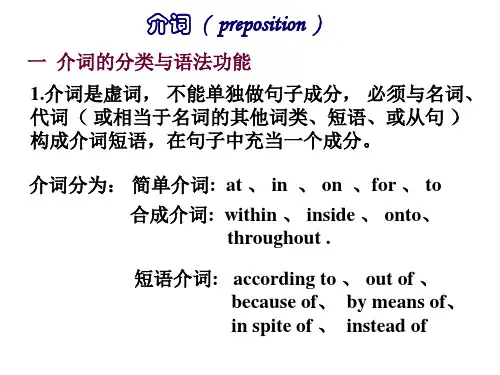他一小时后就回来。
表示“在……时间之后”,
He came back after an hour.
通常“after+时间段”与过
他一小时后回来了。
去时连用,“after+时间点”
与将来时连用。
Tips: 1、in 表示“在……时间之后”,必须满足两个条件。 (1)所修饰的动词必须表过去将来或者现在将来 (2)后面必须是一段时间。否则用after/ later. My father will be back in three days.
2. 从含义上分,可分为表示时间(如:at, in, on, before, between)、地点(如:at, in, on, under, behind)、趋向 (如:to / towards, across, off, up)、原因(如:for, with, due to)、让步(如:despite, in spite of)和条件 (如:in case of, without, but for)等的介词。
内”
表示“毗 on 邻,接壤”
表示 to “在……范围
外”
(4)表示方位的 in, on 和 to
比较
Japan lies to the east of China. 日本位于中国东部。(在……范围外) Beijing lies in the north of China. 北京位于中国北部。(在……范围内) Mongolia, which lies on/to the north of China, is a beautiful country. 位于中国北部的蒙古,是一个美丽的国 家。(毗邻,接 壤/在……范围外)
介词的分类
1. 从结构上分,可分为:简单介词(如:at, in, on, for, over, up)、合成介词(如:inside, outside, within, without)、 以-ing结尾的介词(如:concerning, including, excluding, following)和短语介词(如:according to, because of, apart from, in case of)。
